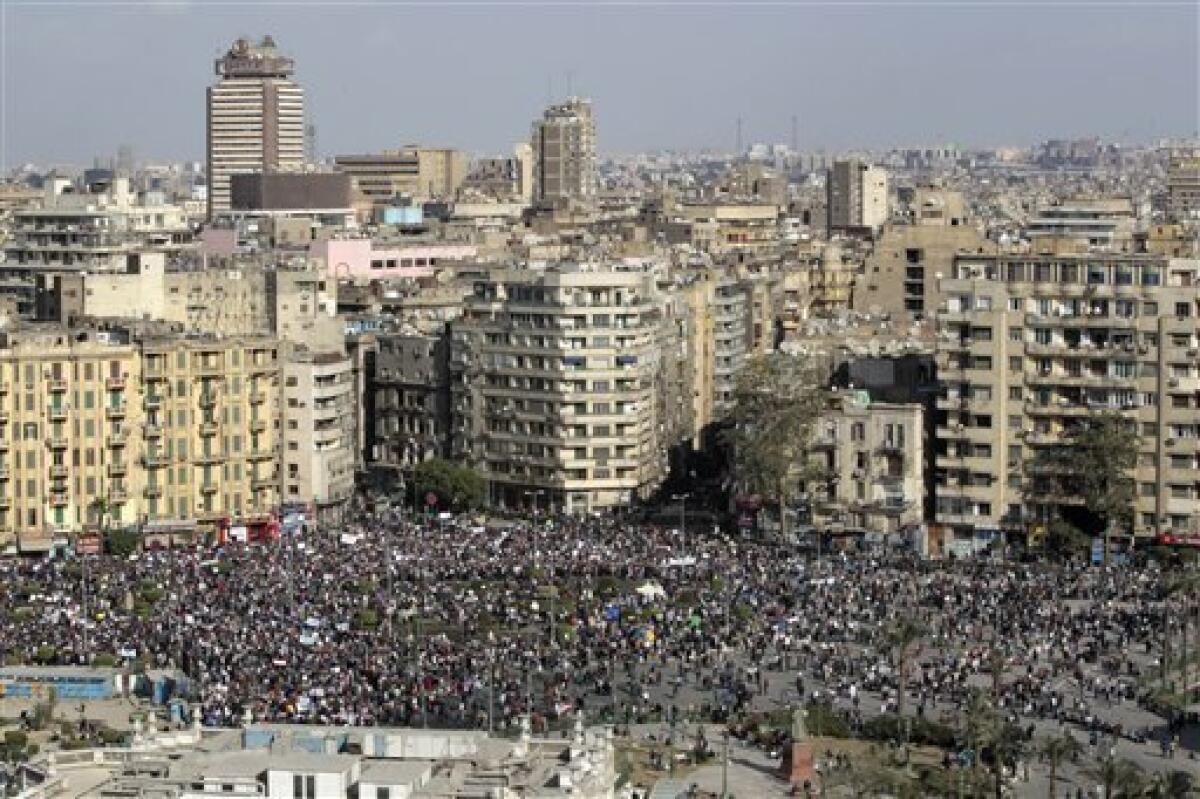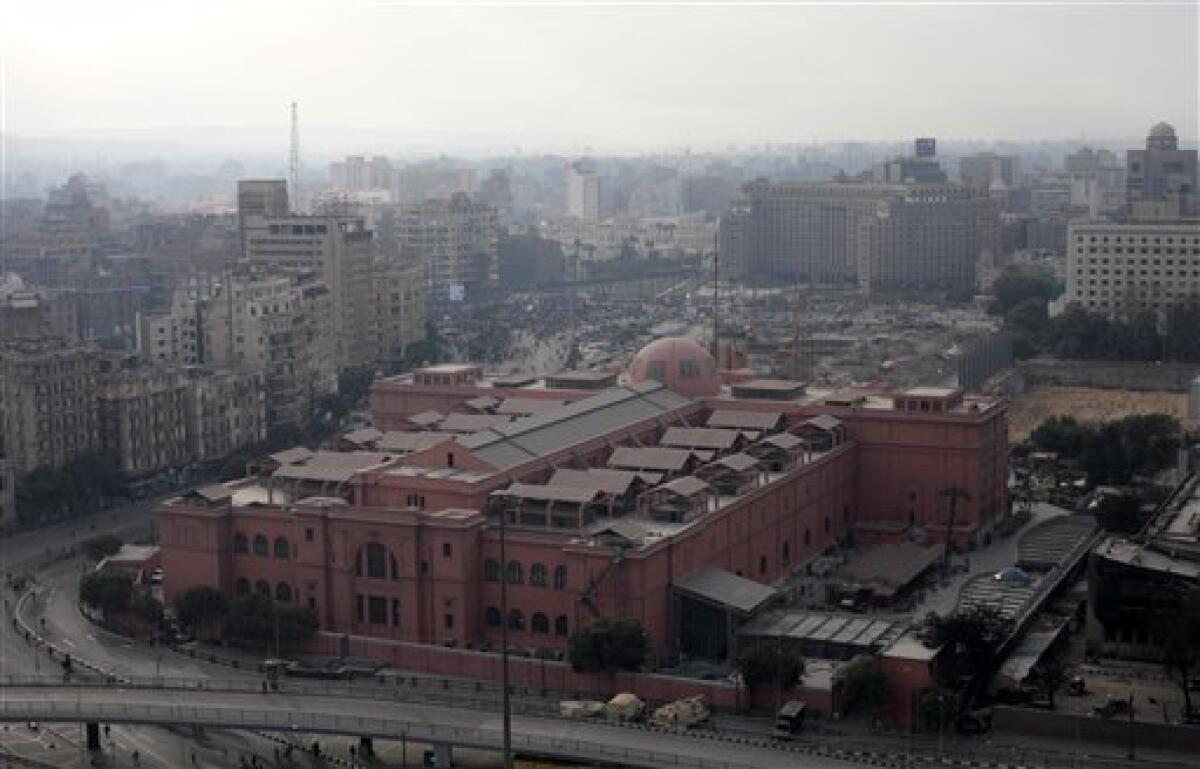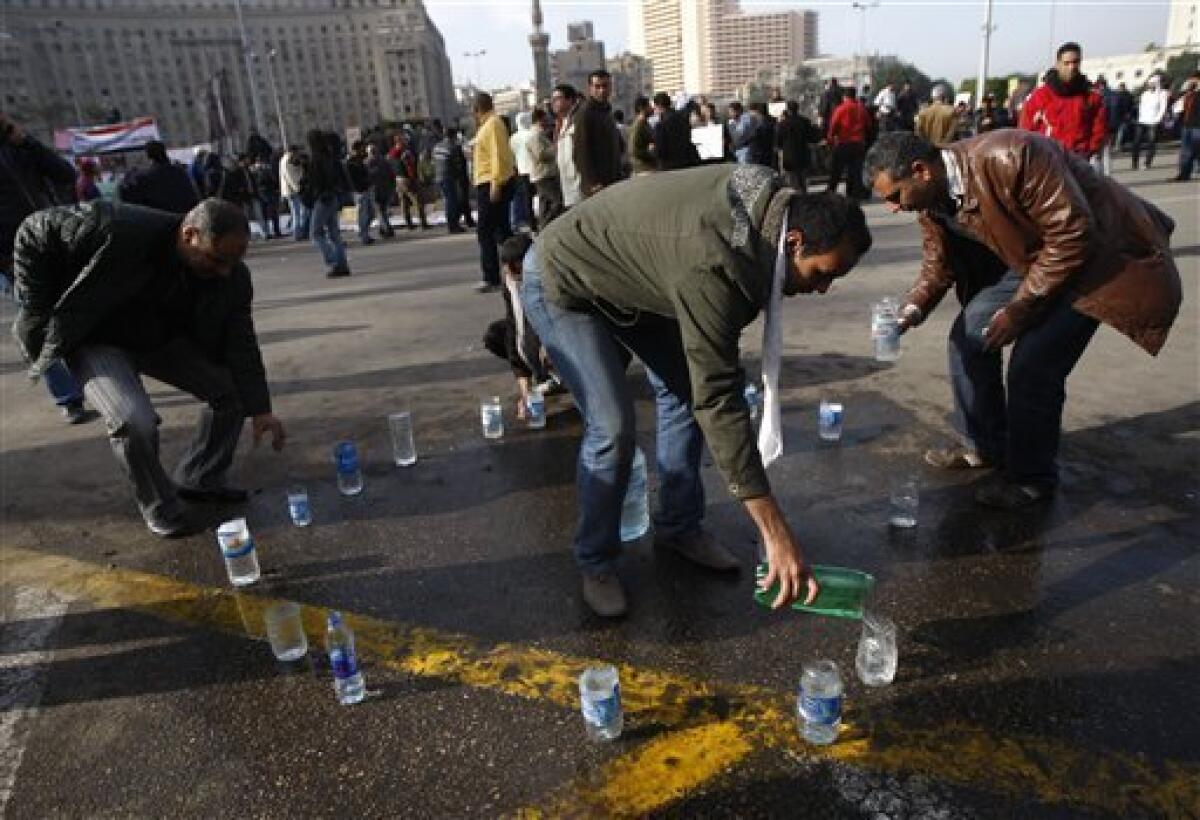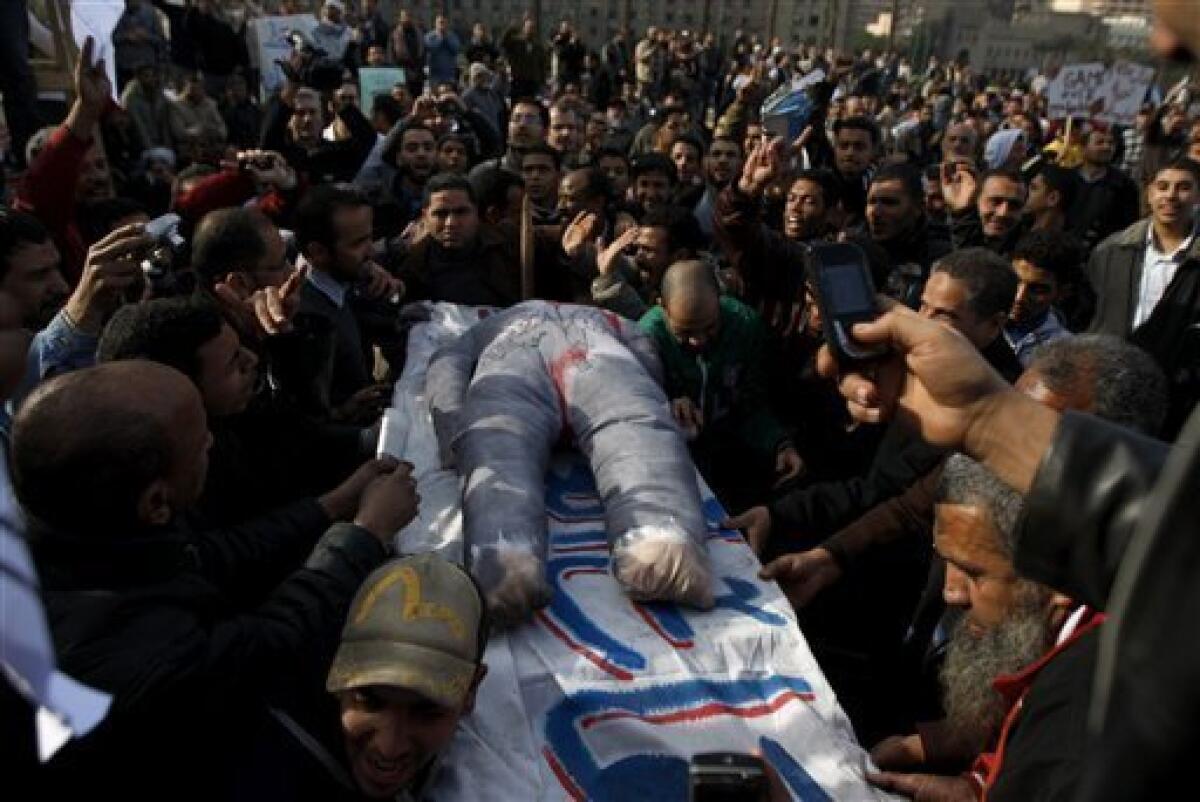Thousands converge in Cairo to demand Mubarak go










Tens of thousands of people flooded into the heart of Cairo Tuesday, filling the city’s main square as a call for a million protesters was answered by the largest demonstration in a week of unceasing demands for President Hosni Mubarak to leave after nearly 30 years in power.
Rivers of protesters arrived in Tahrir, or Liberation, Square at checkpoints guarded by protesters and the army, which promised Monday night that it would not fire on protesters.
The announcement was a sign that army support for Mubarak may be unraveling as momentum builds for an extraordinary eruption of discontent and demands for democracy in the United States’ most important Arab ally.
“We are not going anywhere until Mubarak leaves,” said Mohammed Abdullah, a 27-year-old aviation engineer.
Mubarak, 82, would be the second Arab leader pushed from office by a popular uprising in the history of the modern Middle East.
The loosely organized and disparate movement to drive him out is fueled by deep frustration with an autocratic regime blamed for ignoring the needs of the poor and allowing corruption and official abuse to run rampant. After years of tight state control, protesters emboldened by the overthrow of Tunisia’s president last month took to the streets on Jan. 25 and mounted a relentless and once unimaginable series of protests across this nation of 80 million people - the region’s most populous country and the center of Arabic-language film-making, music and literature.
Soviet-era and newer U.S.-made Abrams tanks stood at the roads leading into Tahrir Square, a plaza overlooked by the headquarters of the Arab League, the campus of the American University in Cairo, the famed Egyptian Museum and the Mugammma, an enormous winged building housing dozens of departments of the country’s notoriously corrupt and inefficient bureaucracy.
Working-class men in scuffed shoes and worn cloth pants stood alongside women in full-face veils who chanted, “The people want to bring down the regime!”
For days, army tanks and troops have surrounded the square, keeping the protests confined but doing nothing to stop people from joining. The guns of many of the tanks pointed out from the square.
Military spokesman Ismail Etman said the military “has not and will not use force against the public” and underlined that “the freedom of peaceful expression is guaranteed for everyone.”
He added the caveats that protesters should not commit “any act that destabilizes security of the country” or damage property.
The protests appeared to be better organized on Tuesday. Volunteers wearing tags reading “Security of the People” said they were watching for government infiltrators who might try to instigate violence.
“We will throw out anyone who tries to create trouble,” one announced over a loudspeaker.
Authorities shut down all roads and public transportation to Cairo, security officials said. Train services nationwide were suspended for a second day and all bus services between cities were halted.
All roads in and out of the flashpoint cities of Alexandria, Suez, Masnoura and Fayoum were also closed
The officials spoke on condition of anonymity because they were not authorized to speak to the media.
Normally bustling, Cairo’s streets outside Tahrir Square had a fraction of their normal weekday traffic.
Banks, schools and the stock market in Cairo were closed for the third working day, making cash tight. Long lines formed outside bakeries as people tried to replenish their stores of bread, for which prices were spiraling.
An unprecedented shutdown of the Internet was in its fifth day after the last of the service providers abruptly stopped shuttling Internet traffic into and out of the country.
Cairo’s international airport remained a scene of chaos as thousands of foreigners sought to flee.
The official death toll from the crisis stood at 97, with thousands injured, but reports from witnesses across the country indicated the actual toll was far higher.
The protesters - and the Obama administration - roundly rejected Mubarak’s announcement of a new government Monday that dropped his highly unpopular interior minister, who heads police forces and has been widely denounced by the protesters.
Abdel Rahman Fathi, 25, said that his friends from the provinces were taking private cars to the square.
“The goal is to oust the regime,” he said. “Every day we try to increase the number.”
Two stuffed dummies representing Mubarak were hung from traffic lights at the square. On their chests was written: “We want to put the murderous president on trial.”
The faces of the dummies were covered with the Star of David, an allusion to many protesters’ accusation that Mubarak is a friend of Israel, which continues to be seen by most Egyptians as their country’s archenemy more than 30 years after the two nations signed a peace treaty.
Hours after the army said it would not use force on the protesters, Vice President Omar Suleiman - appointed by Mubarak only two days earlier in what could be a sucession plan - went on state TV to announce the offer of a dialogue with “political forces” for constitutional and legislative reforms.
Suleiman did not say what the changes would entail or which groups the government would speak with. Opposition forces have long demanded the lifting of restrictions on who is eligible to run for president to allow a real challenge to the ruling party, as well as measures to ensure elections are fair. A presidential election is scheduled for September.
The U.S. State Department said that a retired senior diplomat - former ambassador to Egypt Frank Wisner - was now on the ground in Cairo and will meet Egyptian officials to urge them to embrace broad economic and political changes that can pave the way for free and fair elections.
Around 30 representatives from various opposition groups were meeting Tuesday to produce a set of joint demands and decide whether to make prominent reform advocate Mohamed ElBaradei spokesman for the protesters, said Abu’l-Ela Madi, a spokesman of one of the participating groups, al-Wasat, a moderate breakaway faction from the Muslim Brotherhood.
Unity is far from certain among the array of movements involved in the protests, with sometimes conflicting agendas - including students, online activists, grass-roots organizers, old-school opposition politicians and the fundamentalist Muslim Brotherhood, along with everyday citizens drawn by the exhilaration of marching against the government.
The various protesters have little in common beyond the demand that Mubarak go. Perhaps the most significant tensions among them is between young secular activists and the Muslim Brotherhood, which wants to form an Islamist state in the Arab world’s largest nation. The more secular are deeply suspicious the Brotherhood aims to co-opt what they contend is a spontaneous, popular movement. American officials have suggested they have similar fears.
ElBaradei, a pro-democracy advocate and former head of the U.N. nuclear watchdog, invigorated anti-Mubarak feeling with his return to Egypt last year, but the outlawed Muslim Brotherhood remains Egypt’s largest opposition movement.
In a nod to the suspicions, Brotherhood figures insist they are not seeking a leadership role.
Still, Brotherhood members appeared to be joining the protest in greater numbers and more openly. During the first few days of protests, the crowd in Tahrir Square was composed of mostly young men in jeans and T-shirts.
On Monday, many of the volunteers handing out food and water to protesters were men in long traditional dress with the trademark Brotherhood appearance - a closely cropped haircut and bushy beards.
---
Maggie Michael, Maggie Hyde and Lee Keath contributed to this report.